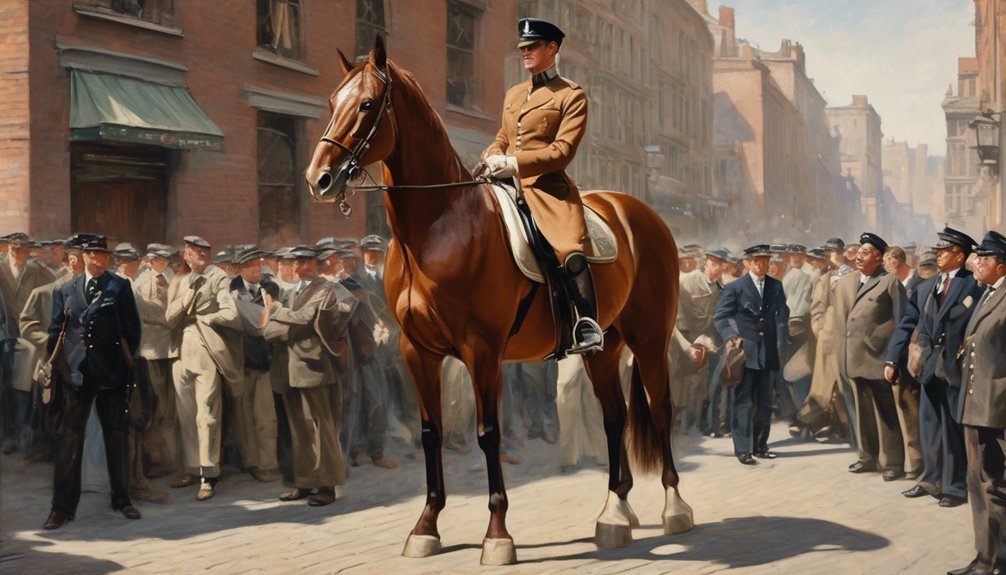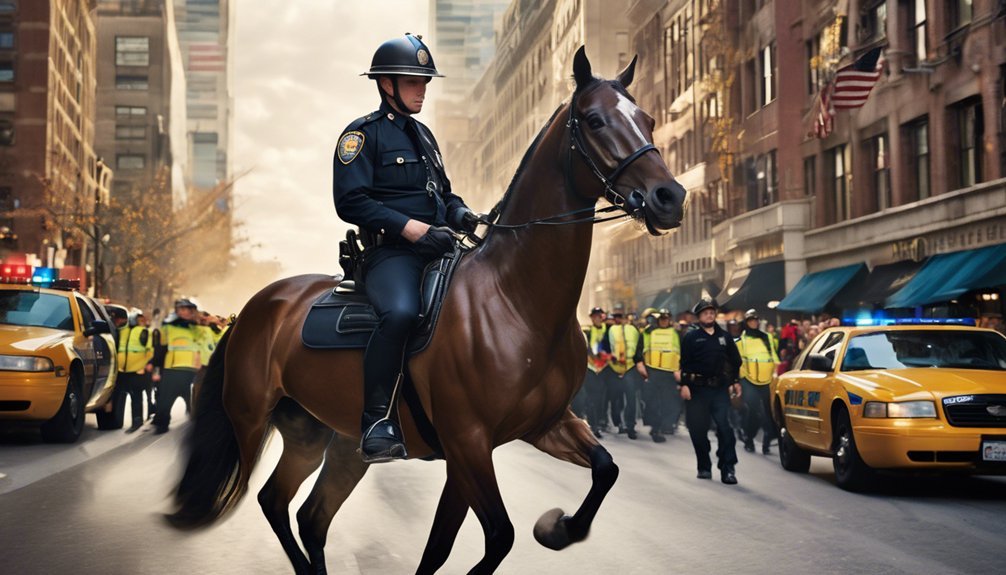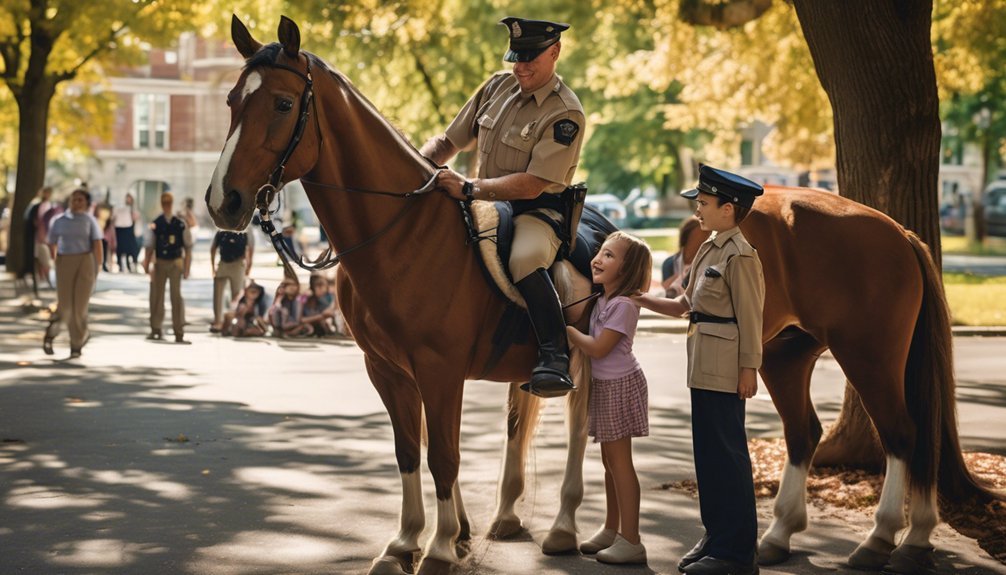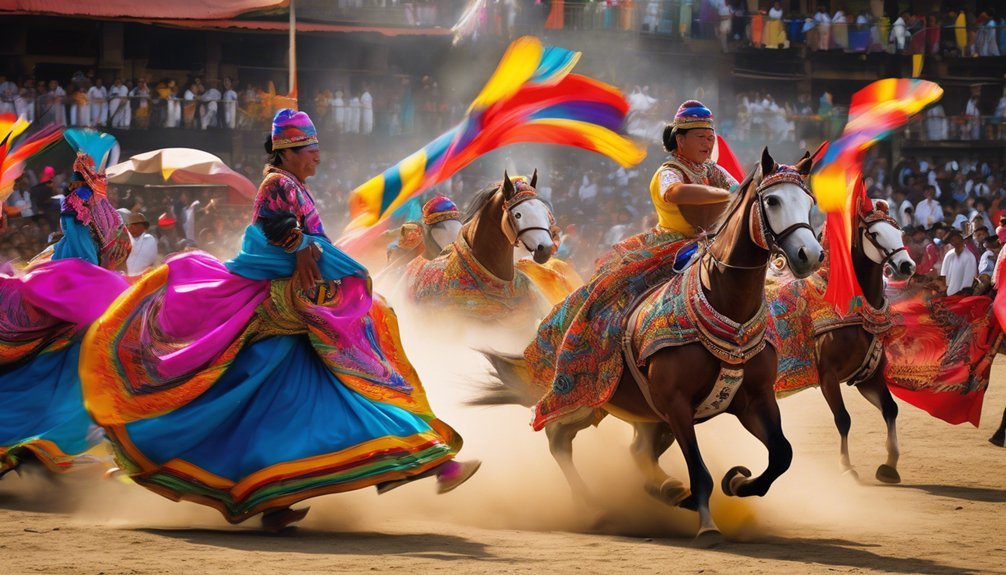
In today's law enforcement landscape, horses play a vital role that blends tradition with modern policing. Mounted units not only enhance visibility but also foster community connections. Their presence can transform interactions with the public, making law enforcement more approachable. However, the integration of horses in police work isn't without challenges. What are the implications of these partnerships for both officers and the communities they serve?
Key Takeaways
- Horses enhance police visibility, allowing officers to cover larger areas and deter crime effectively.
- Mounted units foster community engagement, making officers more approachable and encouraging positive interactions.
- Horses facilitate crowd control during events, ensuring public safety while maintaining order.
- The bond between officers and horses builds trust, presenting police as allies in the community.
- Challenges such as resource demands and public perception must be addressed for mounted units to thrive.
A Brief History of Horses in Policing

Since the early days of law enforcement, horses have played a vital role in policing, serving as both a mode of transportation and a symbol of authority. Their historical significance is profound; they enabled officers to traverse vast areas quickly, maintaining order and enforcing laws.
As cities grew, the need for efficient mobility led to the equestrian evolution in policing. Mounted patrols became a staple in many jurisdictions, fostering a unique bond between officer and horse, enhancing community relations.
The majestic presence of a horse not only commands respect but also brings a sense of safety to the public. Understanding this rich history highlights the enduring connection between law enforcement and these noble animals, reminding us of the traditions that shaped modern policing.
The Role of Mounted Units in Modern Law Enforcement
Mounted units play a crucial role in modern law enforcement, blending traditional techniques with contemporary policing needs. You'll find that mounted patrols enhance community engagement, providing a visible and approachable presence. Officers undergo rigorous equine training, fostering strong bonds with their horses, which helps to build trust with the public.
| Aspect | Impact on Community | Role in Policing |
|---|---|---|
| Visibility | Increases public comfort | Acts as a deterrent |
| Accessibility | Encourages interaction | Enhances communication |
| Trust | Builds community ties | Promotes safety awareness |
| Tradition | Connects history to now | Strengthens police image |
These elements make mounted units an invaluable asset in fostering a safer, more connected community.
Benefits of Using Horses in Police Work
Horses offer numerous benefits in police work, enhancing both operations and community relations. When used effectively, mounted units can transform how you approach law enforcement challenges. Here are a few key advantages:
- Enhanced visibility: Horses tower over crowds, allowing officers to monitor larger areas and maintain a presence that can deter crime.
- Crowd control: Mounted units can navigate through dense crowds more effectively than foot patrols, providing a calming influence and facilitating order during events.
- Community engagement: The presence of horses creates opportunities for positive interactions between officers and the public, fostering trust and rapport.
Incorporating horses into your police work not only improves operational efficiency but also deepens community ties, creating a safer environment for everyone involved.
Community Engagement and Building Trust

When officers engage with the community through mounted patrols, they create unique opportunities for interaction that build trust and rapport.
The presence of horses naturally draws people in, allowing officers to participate in community outreach in a way that's friendly and approachable. You'll see families stopping to chat, children reaching out to pet the horses, and neighbors feeling more comfortable expressing their concerns.
This connection fosters trust building, as individuals recognize officers as allies rather than authority figures to be feared.
Challenges Faced by Mounted Police Units
Although mounted police units offer numerous benefits, they also face significant challenges that can impact their effectiveness. You mightn't realize just how complex these mounted unit challenges can be. Here are a few key issues:
- Horse Training Difficulties: Ensuring that horses are well-trained for various environments and situations takes time and expertise.
- Resource Allocation: Maintaining a mounted unit requires substantial resources, including specialized equipment and dedicated personnel.
- Public Perception: Misunderstandings about the role of mounted police can lead to skepticism or resistance from the community.
These challenges necessitate ongoing commitment and adaptability from law enforcement agencies.
The Future of Equine Partnerships in Law Enforcement
As law enforcement agencies seek innovative ways to enhance community engagement and public safety, the future of equine partnerships looks promising.
With technology integration, mounted units can leverage data analytics and real-time communication tools to improve their effectiveness. Imagine officers on horseback equipped with wearable devices, streamlining information sharing and enhancing situational awareness.
Additionally, training advancements are transforming how officers and horses bond, fostering stronger partnerships.
Enhanced training programs focus on behavioral cues, ensuring better responsiveness in high-stress situations.
Frequently Asked Questions
How Are Horses Selected for Police Work?
When selecting horses for police work, you assess their temperament and conduct a physical fitness evaluation. A calm demeanor and strong physique are crucial, ensuring they can handle the demands of the job effectively.
What Breeds Are Commonly Used in Mounted Units?
Imagine a majestic dance between horse and rider. Commonly used mounted breeds like Belgian, Percheron, and Thoroughbred possess strong equine characteristics, ensuring they're well-suited for the demands of mounted units in various situations.
How Do Officers Train With Their Horses?
You'll see officers engage in various training techniques with their horses, focusing on building trust and communication. Mounted patrols emphasize teamwork, desensitization, and maneuvering skills, ensuring both horse and rider are prepared for any situation.
What Is the Average Lifespan of a Police Horse?
Like a loyal companion, a police horse typically enjoys a lifespan of 25 to 30 years. With proper equine care, these majestic animals remain healthy and strong, serving their purpose alongside officers for many years.
How Do Police Horses Handle Stressful Situations?
When facing stressful situations, you'll notice police horses exhibit strong stress management skills. Their behavioral responses often include focused attention and calm demeanor, allowing them to navigate challenges effectively while supporting their riders during intense moments.
Conclusion
In a world racing toward technology, the presence of mounted police units stands as a comforting reminder of tradition. While drones and digital tools reshape modern policing, the bond between horse and officer fosters a unique connection with the community. These majestic animals not only enhance visibility but also break down barriers, inviting trust and engagement. As you consider the future of law enforcement, remember that sometimes, the most powerful partnerships are rooted in history.





